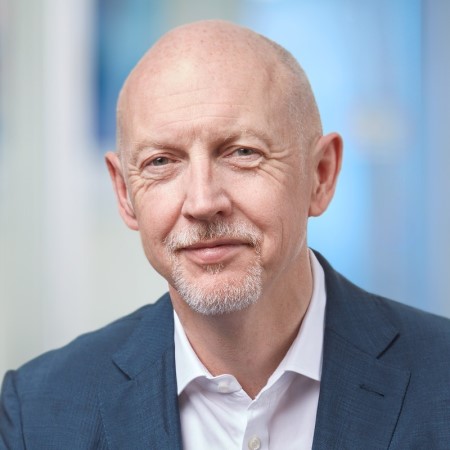Sanofi Exit From Sickle Cell Gene Therapy Leaves Sangamo With Difficult Decision
Adds To Hemophilia A Problems
Executive Summary
Sanofi’s decision is influenced by its own in-house options, but also by the growing competition in sickle cell gene therapy.
Sanofi is to hand back the rights to Sangamo Therapeutics’s gene-edited cell therapy for sickle cell disease (SCD), SAR445136, after deciding to focus instead on allogeneic cell therapies.
The Paris-headquartered pharma company announced on 6 January that it would return the rights to the candidate during the first half of 2022 – despite promising preliminary Phase I/II data presented only last month at the American Society of Hematology meeting.
This leaves Sangamo facing a difficult decision about whether to seek a new partner or go it alone. Its zinc finger gene edited candidate could prove to be a curative therapy for severe SCD patients, but it is up against competition from more advanced rivals.
Sanofi said its decision was in line with its strategy to focus on “universal genomic medicine approaches” – a reference to the Sangamo candidate being an autologous therapy requiring each patient to provide cells which are then genetically modified and reinfused.
This approach has proven success in the first-generation CAR-T therapies, but the cost and complexity of the procedure has limited the clinical and commercial reach of the treatments. Sanofi’s decision shows it putting its faith in allogeneic or ‘off-the-shelf’ cell therapies, such as those developed using the cell therapy platform it acquired with Kiadis Pharma last year for $359m. (Also see "Sanofi Bids €308m To Buy Kiadis" - Scrip, 2 Nov, 2020.)
Sanofi acquired the Sangamo licensing rights when it acquired the Biogen-spinout Bioverativ. That along with the buyout of Ablynx and key in-licensing deals, has helped it build a substantial rare blood disorders pipeline, but its jettisoning of the SCD program will help de-risk this therapy area, where it has the much anticipated but delayed fitusiran. (Also see "Fitusiran Delay Dents Sanofi’s Hemophilia Challenge" - Scrip, 14 Dec, 2021.)
Growing Competition In Sickle Cell Therapy
Another factor which Sanofi will have weighed up was the increasing competition in SCD, as well as the adjacent beta thalassemia therapy market.
Vertex and CRISPR Therapeutics unveiled strong early data from their in vivo gene editing candidate CTX001 in June, and Vertex is now gearing up to file with the US FDA for use in both transfusion-dependent beta thalassemia (TDT) and severe SCD.
Another rival is Bluebird Bio, whose ex vivo gene therapy, bb1111, was also featured at the ASH congress, but with more mature data from 49 patients on a median follow up of 24 months. The treatment showed encouraging results in preventing severe vaso-occlusive crises (VOCs), which are typical of SCD.
Sanofi and Sangamo’s SAR445136 Phase I/II PRECIZN-1 trial update at ASH was in only four patients and covered a follow up period of at least 26 weeks. The results showed none of the patients required blood transfusions after engraftment, while fetal hemoglobin levels (the major genetic modulator in SCD) rose from 0.1%-11% at screening to 14%-39% by week 26 in all patients, reaching 38% in the longest-treated patient at 91 weeks.
Most adverse events reported were SCD-related, including sickle cell anemia with crisis (VOC), which was reported around nine months after treatment in one patient.
While that data show promise, they do not provide any clear indication that Sangamo’s candidate might offer advantages over its competitors, something it will need to attract a new big pharma partner.
Sangamo’s CEO Sandy Macrae said his company remained committed to progressing the program, and would “vigorously investigate alternative options” to continue its development.
The company expects the Phase I/II study to be completed and for final patients in the study to be dosed in the third quarter of 2022, when it also plans to discuss future trials with regulators.
For the Brisbane, CA-based biotech the news is another frustrating setback in its path towards validation of its proprietary zinc finger (ZF) platform, which is being challenged by newer gene-editing approaches such as CRISPR and base editing. (Also see "Gene-Editing Companies To Watch At J.P. Morgan" - Scrip, 5 Jan, 2022.)
Its most advanced asset is giroctocogene fitelparvovec, a gene therapy for hemophilia A it is developing with Pfizer. This could rival BioMarin’s frontrunner, valrox, which has been delayed by safety and efficacy queries from the US FDA, but will be re-filed in Q2.
However, Pfizer and Sangamo have had their own setback, and had to amend their Phase III trial protocol after treatment saw Factor VIII blood clotting factor levels in some patients reach a potentially dangerous 150% of normal levels.
The US regulator placed pivotal study on clinical hold in November in order to review the protocol amendment and safety issues, with no indication yet about when this may be resolved.

